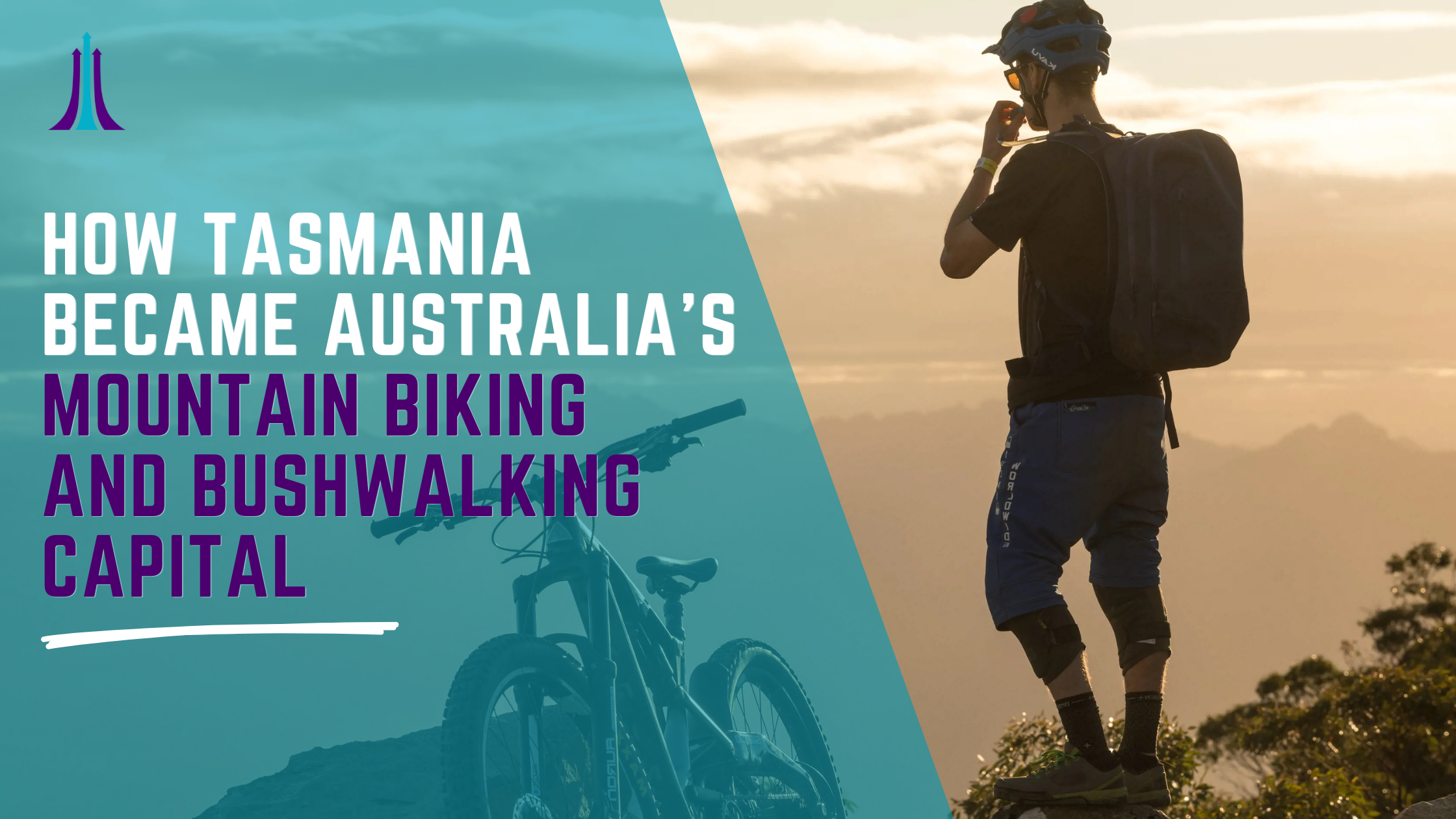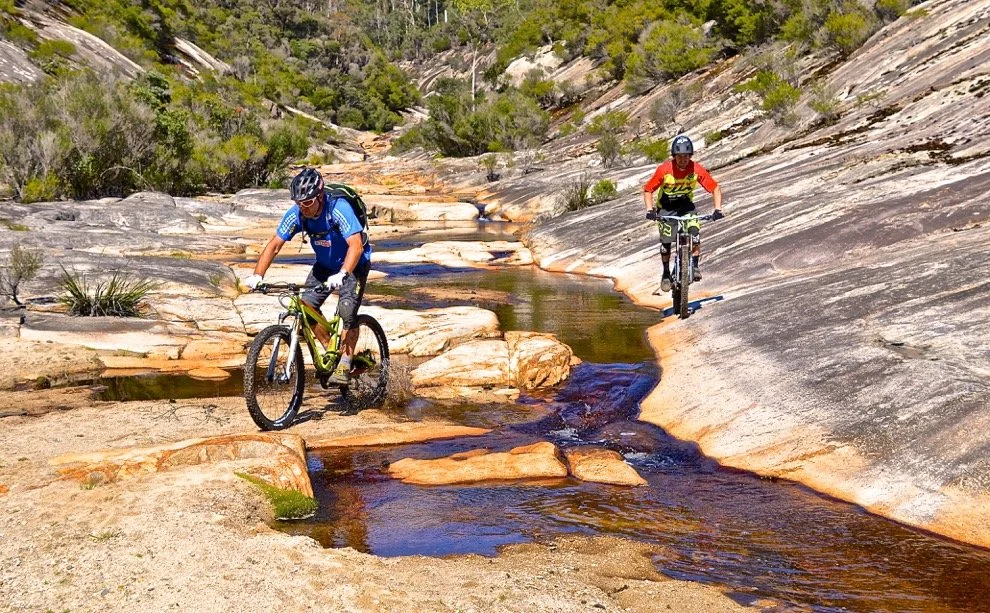How Tasmania Became Australia’s Mountain Biking and Bushwalking Capital
Tasmania has transformed itself into the ultimate destination for outdoor enthusiasts.
From mountain bikers carving through world-class trails to walkers exploring ancient temperate rainforests, the island has earned a reputation as Australia’s bushwalking and mountain biking capital.
But how did this small island state achieve such recognition?
And how does it manage these experiences sustainably while protecting its natural treasures for future generations?
The Rise of Mountain Biking in Tasmania
1. Blue Derby: A Global Benchmark
The turning point came with the development of Blue Derby, a network of purpose-built mountain biking trails near the former mining town of Derby in the state’s north-east.
Launched in 2015, these trails transformed Derby into a tourism success story, revitalising the local economy.
Blue Derby’s success is attributed to:
World-class trail design by experts like Glen Jacobs and World Trail.
Community consultation ensuring locals were on board, resulting in new cafes, accommodation and bike shops.
Hosting the Enduro World Series in 2017 and 2019, cementing its reputation globally.
2. Maydena Bike Park and Beyond
Following Derby’s success, Maydena Bike Park in the south-west opened in 2018 with over 60 trails catering to beginners through to advanced riders.
It quickly became Australia’s biggest gravity-focused bike park.
Other regions like St Helens, Queenstown, and George Town have also developed new trails, creating a state-wide mountain biking tourism offering that appeals to multi-day visitors looking to explore multiple destinations in one trip.
Bushwalking in Tasmania: Iconic Trails and Wilderness Experiences
Tasmania’s bushwalking history stretches back decades before the mountain biking boom.
The Overland Track is arguably Australia’s most famous multi-day hike, taking walkers through alpine meadows, ancient forests, and past glacial lakes between Cradle Mountain and Lake St Clair.
Other popular walking experiences include:
The Three Capes Track on the Tasman Peninsula, opened in 2015, offering a 4-day hut-based walk along sheer sea cliffs with spectacular ocean views.
Walls of Jerusalem National Park for wilderness camping and alpine scenery.
Freycinet Peninsula Circuit featuring Wineglass Bay and rugged granite peaks.
Tasmania’s bushwalking offering is unmatched for diversity, remoteness, and wilderness immersion.
Managing Mountain Biking and Bushwalking Experiences
Tasmania’s success lies not just in building trails and promoting them, but in how it manages these experiences to protect the environment and deliver quality for visitors.
1. Purpose-Built Infrastructure
Unlike ad hoc or informal trails, Tasmania invests in purpose-built tracks designed for sustainability:
Trails are designed to minimise erosion, control water flow, and protect vegetation.
Construction uses local materials where possible and aligns with natural contours to reduce environmental impact.
2. Visitor Management Systems
For iconic walks like the Overland Track and Three Capes Track, Tasmania Parks and Wildlife Service manages visitor numbers through:
Booking systems and capped daily numbers to reduce overcrowding and maintain track conditions.
Track fees contribute directly to maintenance and conservation.
Education on minimal impact practices, such as Leave No Trace principles.
3. Mountain Bike Trail Management
Mountain biking trails undergo regular maintenance by skilled crews.
Trail design includes:
Drainage features and armouring to reduce water damage.
Designated use zones to separate walkers and riders where needed.
Clear signage and mapping to prevent environmental damage from riders going off-trail.
Balancing Access and Conservation
Tasmania has successfully balanced growing tourism with protecting its pristine environments.
Here’s how they do it:
1. Strategic Planning
Projects like Blue Derby and Three Capes Track underwent environmental impact assessments and community consultation before development. This ensured trails:
Avoid sensitive habitats.
Respect Aboriginal cultural sites.
Deliver economic benefits to local communities.
2. Working with Traditional Owners
Many Tasmanian experiences integrate palawa (Tasmanian Aboriginal) cultural heritage, sharing stories of land connection and cultural practices while ensuring sites are respected and protected.
3. Ranger Presence and Education
Popular tracks and parks have rangers and information centres providing education on:
Wildlife protection.
Biosecurity (e.g. boot cleaning stations to prevent spread of plant diseases like phytophthora).
Waste management and toilet facilities to keep wilderness areas pristine.
The Economic and Social Impact
Tasmania’s outdoor tourism boom has:
Revitalised small towns like Derby and Maydena, which now rely heavily on tourism income.
Created new jobs in guiding, hospitality, retail, and maintenance.
Extended the visitor season, as mountain biking and bushwalking are year-round activities, unlike ski resorts limited to winter.
Fostered community pride in these nature-based assets.
Protecting for Future Generations
Tasmania understands that its natural landscapes are its greatest tourism asset. To protect these areas for future generations, the state focuses on:
Conservation funding: Entry fees and track passes fund trail maintenance, conservation programs, and local community initiatives.
Strict environmental guidelines: All trail developments require comprehensive assessments to minimise impacts.
Sustainable tourism strategies: Future planning prioritises carrying capacity, climate change resilience, and regional dispersal to avoid over-tourism hotspots.
Community-led stewardship: Locals are engaged through volunteering, environmental groups, and consultation to foster long-term care.
Why Tasmania Leads Australia in Outdoor Adventure Tourism
Tasmania’s success is not accidental. It stems from visionary planning, community collaboration, environmental stewardship, and strategic marketing.
The result is an outdoor tourism offering that delivers transformative experiences for visitors; from the adrenaline of mountain biking to the soul-soothing stillness of remote bushwalks, while protecting these environments for the next generation.
How Your Tourism Business Can Learn from Tasmania’s Success
At Exceptional Experiences, we specialise in helping tourism businesses:
Develop visitor experiences that integrate nature, culture, and sustainability.
Create marketing strategies that position your region as a must-visit destination.
Train your team in environmental awareness and guest education to enhance your reputation.
Grow year-round sales through purposeful tourism experiences that attract high-yield visitors.
Ready to Elevate Your Business?
Tasmania’s mountain biking and bushwalking success story shows what is possible when tourism development and environmental protection work hand in hand.
Contact Exceptional Experiences today. to learn how we can help you build, market, and manage experiences that benefit your business, your community, and the planet.





